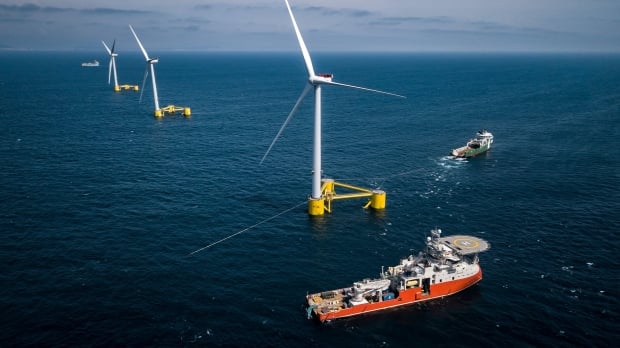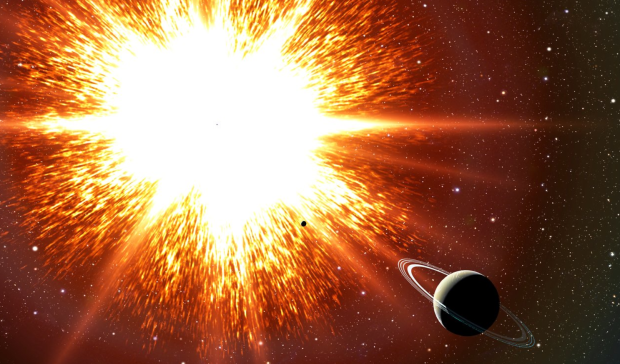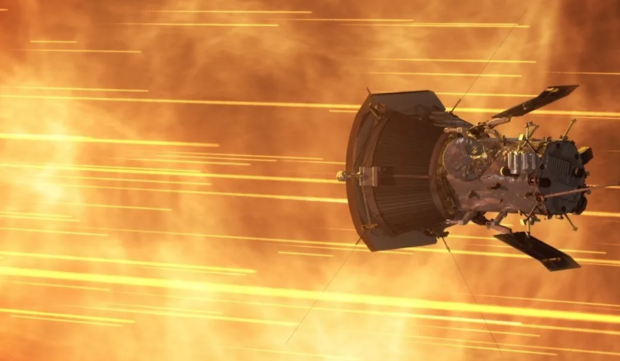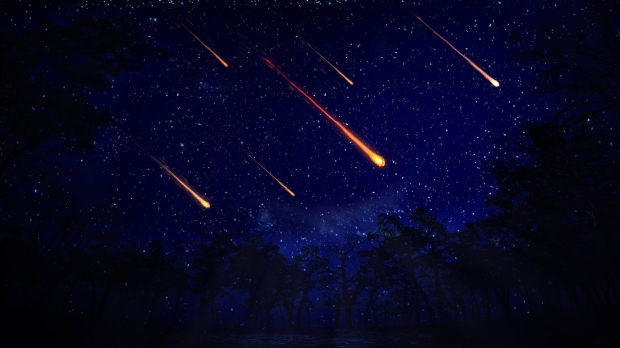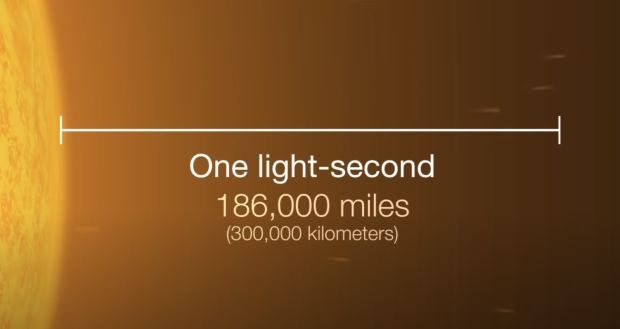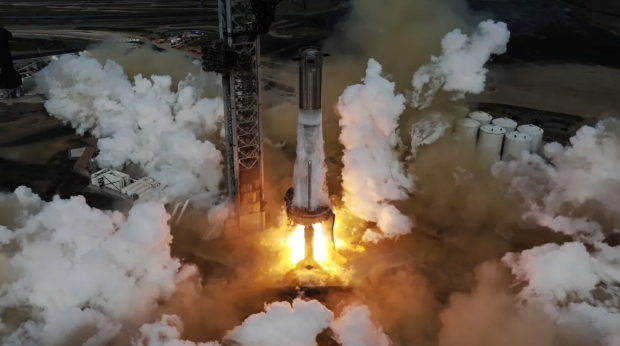Science, Space, Health & Robotics News - Page 16
Moonwalkers X 'robotic shoes' will be at CES 2024, and they kind of look like AI roller skates
Shift Robotics is bringing its latest version of 'robotic shoes' to CES 2024, called Moonwalkers X. With six wheels (the original Moonwalkers has 10 wheels), the Moonwalkers X look like fancy roller skates designed for business and commercial use for employees that do a lot of walking.
Although they feature wheels, they're not roller skates. Each Moonwalkers X show straps onto your existing shoe, and with AI measuring your stride 100 times per second, they adjust to speed up the walking process. With Moonwalkers X, you can walk up to 250% faster than normal, which is why Shift Robotics mentions warehouse workers who might walk as many as 30,000 steps daily.
The latest version of these 'robotic shoes' (the wheels are smart enough to lock into place when they detect stairs) are significantly lighter, less than one pound for each shoe - and have been overhauled for control, safety, and agility.
Here's the world's first subsea power distribution system for floating offshore wind farms
Aker Solutions, a low-carbon and renewable energy projects company, has penned a front-end engineering and design (FEED) contract with the Marine Energy Test Centre (METCentre) in Norway for a new subsea power system technology designed to reduce running costs of the MetCentre's offshore wind farms.
The new contract will introduce a new power transmission technology called the Subsea Collector to MetCentre's offshore wind farm, which currently consists of two wind turbines located approximately 6 miles off the coast of Karmøy, Norway.
The test area is expected to expand the fleet to seven wind turbines from 2026, and according to a press release, the Subsea Collector throws out the traditional daisy-chain pattern used to connect wind turbines, and offers a new star-shaped pattern that enables more flexibility architecturally within the designed wind farm area, reduced cable length between turbines, and reduces installation costs. According to Aker Solutions, the Subsea Collector is expected to reduce the costs of a 1GW floating wind farm by up to 10%.
NASA kicks off 2024 by capturing at least two exploded objects in deep space
NASA has taken to its blog to share an incredible new image of a supernova remnant, or the leftover remains of an exploded star.
However, this new image doesn't feature just one of remains of a now-dead star, but at least two, with astronomers leaning on the side of more being discovered upon further inspection. The above image is 30 Doradus B (30 Dor B), and is a large region of space that contains millions of stars that have been forming for 8 - 10 million years. The region of space is located in the Large Magellanic Cloud, a small satellite galaxy of our own Milky Way.
NASA combined data from its Chandra X-Ray Observatory (represented in purple), optical data from the Blanco 4-meter telescope in Chile (shown in orange and cyan), and additional optical data from NASA's iconic Hubble Space Telescope (black and white). Studies astronomical objects such as 30 Dor B allows astronomers to learn more about the evolution of stars, and the overall universe.
NASA set to make 'monumental achievement for all of humanity' in 2024
NASA's Park Solar Probe, a spacecraft designed to monitor and observe our local star, is scheduled to make a milestone pass of the Sun late next year, marking a monumental achievement for humanity.
The space probe is designed to collect valuable data about our Sun, such as solar weather, solar patterns, star evolution, and much more. Notably, the Parker Solar Probe is the fastest human-made object, and with every pass it makes of our local star, it gains speed, breaking its previous record. Last September, the Parker Solar Probe reached 394,736 mph (635,266 km/h), breaking its previous record of 364,660 mph (586,863 kmh).
On December 24, the Parker Solar Probe will pass the Sun at 435,000 mph, at a distance of just 3.8 million miles from the Sun's "surface". According to Parker project scientist Dr. Nour Raouafi, "We are basically almost landing on a star." The incredible speed of the Parker Solar Probe can be attributed to the intense gravitational pull of the Sun, and for a quick comparison of the speed, NASA's Sun probe would be moving so fast it would be similar to traveling from New York to London in under 30 seconds.
Continue reading: NASA set to make 'monumental achievement for all of humanity' in 2024 (full post)
Here's when the first meteor shower of 2024 will peak
Kicking off the year with a beautiful lights display, stargazers will be in for a treat as the first meteor shower of 2024 is set to arrive this week.
The Quadrantids, as the shower is known, have been active since December 26, 2023, and will continue to be visible in the night sky well up till January 16 but will peak Thursday, January 4, making this the best time to see the first shower of the year.
The Quadrantids have the potential to be the strongest shower of the year, and it has only just begun, although the showers usually fall short due to the short length of the maximum activity, sitting around only 6 hours, and poor weather conditions. These meteors under the night sky average 25 meteors an hour and usually lack a consistent trail but instead produce large, bright fireballs.
Continue reading: Here's when the first meteor shower of 2024 will peak (full post)
LG shows off AI-powered robot butler that greets you at your door when you get home
The small robot doesn't officially have a name yet, but LG Electronics decided to give a sneak peek ahead of the coming announcement madness week of CES 2024, which is scheduled to kick off next Tuesday.
LG describes the new wheeled robot as a "moving smart home hub," which will act similarly to an Amazon Alexa device or any other similar assistant-like device. The small robot will be capable of answering questions, connecting to smart home applications to provide updates on the device status, alerting users of unusual activity, notifications for when a light has been left on, weather updates, transportation updates, personal schedules, and even reminders to take medications.
All of these features, along with its cameras, speakers, and sensors used for gauging temperature, humidity, and air quality, are all powered by Qualcomm's RB5 robotics chip. LG writes in its press release that when a user returns home to the wheeled robot, it will greet them at the front door while simultaneously analyzing the user's emotions, voice, and facial expressions. It will then select music or other content based on the analyzed data to attempt to suit the user's mood.
NASA spacecraft captures closest look at Jupiter's volcanic moon Io
NASA has taken to its official social channels to share images of Jupiter's moon Io captured by its JunoCam instrument aboard its Juno spacecraft..
The new images mark the closest look at Jupiter's volcanic moon Io in decades, with the space agency explaining its Juno spacecraft made an extremely close approach with the moon on December 30. NASA writes that Juno passed above the surface of Io at an altitude of just 932 miles, and due to its low height, it was able to capture a close look at hundreds of mountains scattered across its surface.
Notably, Io is believed to be extremely volcanically active, ranking first in the category for the most volcanically active body in the solar system. This means the surface of the moon is littered with many volcanoes constantly spewing emissions and lava. Reports indicate that these volcanoes aren't massive, only 2.14 - 0.62 miles in height.
Continue reading: NASA spacecraft captures closest look at Jupiter's volcanic moon Io (full post)
NASA explains how far light from the Sun will travel throughout 2024
The vastness of space is quite difficult to imagine, especially considering the general measurement used to measure distances between objects is light years, but what does that actually mean? And how would light travel throughout an entire year?
What is a light year? To understand this, we must first know what light-time is - the distance light travels within a specific period of time. In just one light-second, a photon of light has traveled 186,000 miles or 300,000 kilometers. In one light minute, light travels 11,160,000 miles, and one light hour is 671 million miles. With these measurements, we can understand that it takes 8.2 minutes for light from the Sun to reach Earth and 43.2 minutes for it to reach Jupiter.
But what about an entire day? Light from the Sun will travel 16.1 billion miles over the course of a day, reaching far beyond the Kuiper Belt and 29 light-days to the inner wall of the Oort Cloud, a collection of dormant comets that would take light 1.87 years to reach. Light from the Sun will travel 5.8 trillion miles over the course of one year, and the closest star and exoplanet are Proxima Centauri & Proxima B, located 4.25 light-years from Earth.
Continue reading: NASA explains how far light from the Sun will travel throughout 2024 (full post)
SpaceX closes out 2023 with epic video of Starship booster testing
To celebrate the end of 2023 SpaceX has fired up Starship's Super Heavy Booster in its Flight 3 static fire test.
SpaceX has taken to its X account to share an awesome video of its Starship static fire test, with SpaceX CEO Elon Musk sharing an image of the test. The double test of both Starship and the Super Heavy booster comes ahead of Starship's third orbital test flight. The test involved the firing of all 33 Raptor engines on the Super Heavy Booster 10, along with the one Raptor engine on the Starship Ship 28 located atop the Super Heavy Booster.
The first two orbital launch attempts of Starship ended in a fiery explosion and an incompletion of the company's overall objective of sending a Starship upper around the Earth and splashdown in the Pacific Ocean near Hawaii. However, each launch has provided SpaceX with a lot of data used to improve the chances of the overall objective being achieved, as Flight 2 demonstrated a successful separation between Super Heavy and Starship, which wasn't achieved in Flight 1.
Continue reading: SpaceX closes out 2023 with epic video of Starship booster testing (full post)
Watch waves crash ashore and the 7.6 magnitude earthquake rocking Japan
Japan has been struck by a 7.6 magnitude earthquake, killing at least 48 people as of the time of reporting, injuring dozens and causing widespread damage.
The region was struck with multiple earthquakes, each ranging in severity but the largest was recorded to have a magnitude of 7.6 and occurred at a shallow depth of 6.2 miles on the west coast of Japan's main island, around 186 miles from Tokyo. The epicenter of the quake was located on the peninsula, and the majority of the damage has been concentrated there with authorities now saying that they are at a race against time to recover any survivors buried under rubble and debris.
Notably, aftershocks can slam the same affected region within the next few days, according to Japan's meteorology agency, which also informed residents living near coastal areas to not return to their homes despite the preliminary tsunami warnings that stated waves could reach as high as 16 feet, per Japanese public broadcaster NHK TV. Below are a collection of videos posted to TikTok showcasing some of the damage the massive earthquake has caused.



